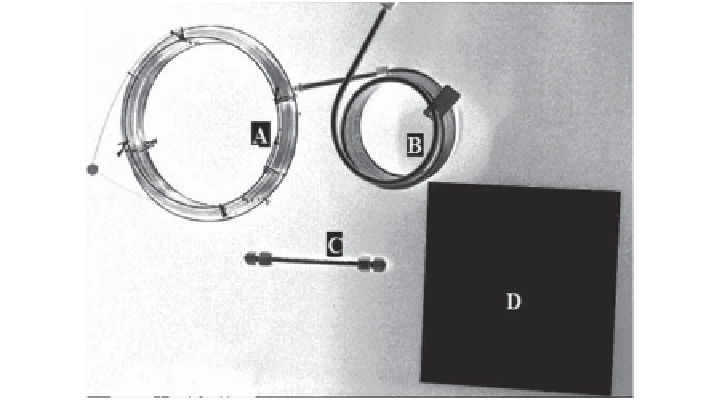Agriculture Reference
In-Depth Information
and chromatography is commonly used for compounds that are gases at room
temperature or are low-boiling compounds.
There are two types of gas chromatography columns that employ a liquid
phase. Packed columns, usually 3 or 6 mm (
~
8
or
4
inch) in diameter and 2 m
(
6 ft) long, are filled with an inactive solid coated with a high-boiling grease
or oil or has a similar compound bonded to it. Also, compounds having various
functionalities and polarities can be bonded to the stationary phase to produce
packings with specific separation capabilities. The second type is a capillary
column with an inner diameter of 1 mm or less and a length of either 30 or
60 m, although some are much longer. The inside of the capillary is commonly
coated with the same stationary-phase materials as used in packed columns.
It is this layer of organic material, which acts as the adsorbant. In either case
the layer must have a sufficiently high boiling point or be attached such that
it will not be lost when the column is heated during use.
Most columns are usable to 250-300°C and in some cases even higher. A
capillary gas chromatographic column (
A
) and a packed column (
B
) are shown
in Figure 9.4.
Some GC packings or stationary phases are sensitive to either or both
oxygen and water. Because soil always contains both, it is important that care
be taken with soil extracts to make certain that they do not contain any com-
ponents that will degrade the chromatographic column, which may cost
between $500 and $1000.
~
A
B
C
D
Figure 9.4.
Columns used in chromatography and a thin-layer sheet. Columns
A
and
B
are a cap-
illary column and a packed column, respectively. Column
C
is for HPLC. Column
D
is a thin-layer
sheet with plastic backing such that it can be cut into smaller pieces as needed.




